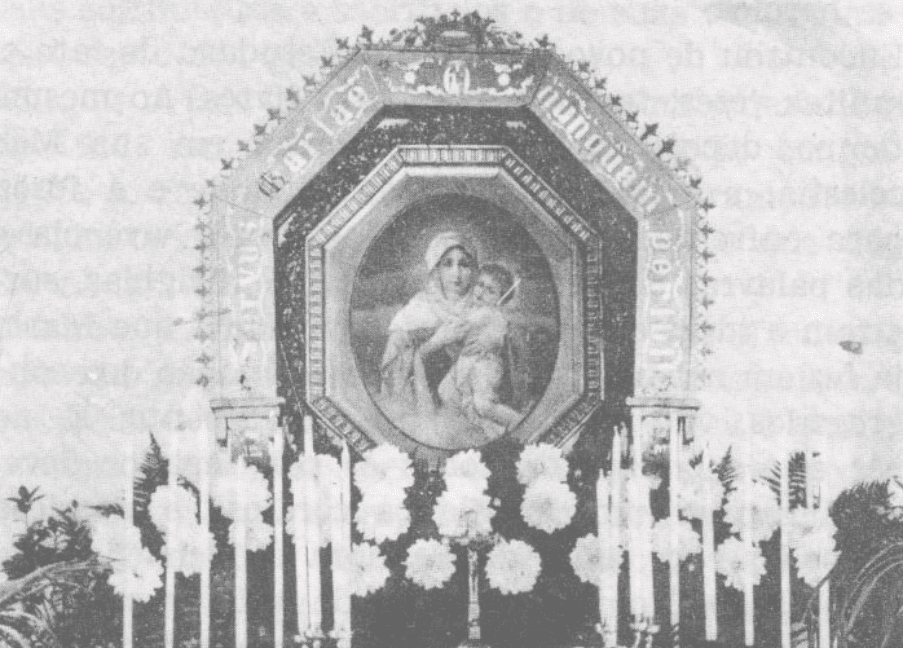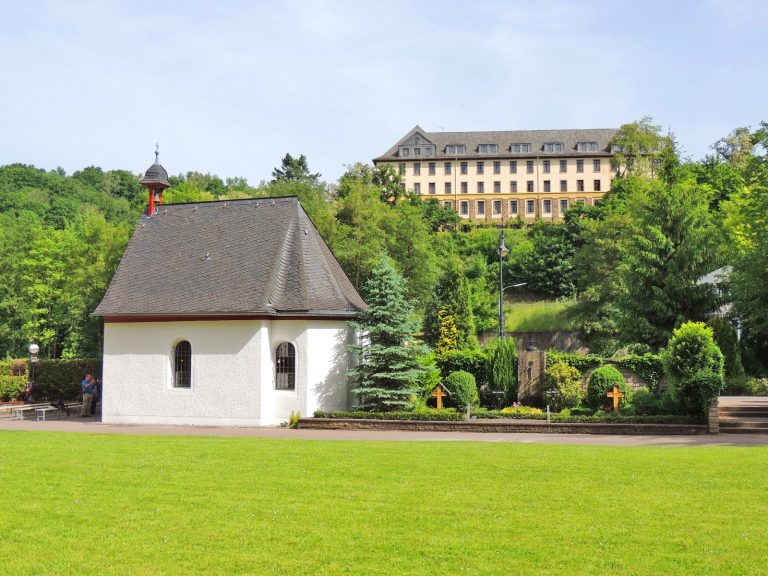Whoever enters a Schoenstatt shrine, as soon as they raise their eyes, will encounter the phrase that surrounds the image of Mary: Servus Mariae Nunquam Peribit. Translated from Latin, this expression means that a servant of Mary will never perish.
But why is this phrase there? Who put it there?
Fritz Esser, a congregant of the first Schoenstatt generation, chose this phrase. Initially he carved a wooden frame with these words for the Original Shrine. His desire was to make a gift to the Virgin Mary, decorate the shrine and also declare something he had experienced on many occasions: our Blessed Mother never abandons her children.
Thus, in 1919, this frame was placed in the Schoenstatt shrine.
In the history of the Church
“The origin of the motto ‘Servus Mariae nunquam peribit’ has a long Catholic tradition going back at least to St. Anselm of Canterbury (1033-1109) and includes St. Alphonsus Liguori (1696-1787) as a special promoter. There are records of its use in Schoenstatt in 1916 with the variant Servus Maria non peribit. The more categorical expression ‘nunquam’ (never) appears as early as April 1917 in a letter written by Max Brunner”, explained Father Jonathan Niehaus. Niehaus further states that with this phrase “Esser preferred to carve out a motto that was very dear to him.” [1]
The inscription: SERVUS MARIAE NUNQUAM PERIBIT expresses the conviction of a young life and of the entire Marian Congregation. It is likely that this frame was placed around the image of the MTA on the fifth anniversary of the Marian Congregation, Sunday, April 27, 1919.
What does Father Kentenich tell us?
In a meeting with married couples in Milwaukee/USA Father Kentenich points out:
“Look at what is written above the arch in the shrine. It is: Servus Mariae nunquam peribit. Which Mary is this referring to? To the Mother Thrice Admirable, who established herself here, educating people here and through them, placing a new world before Christ.
This phrase means, therefore, that in the ark – in Schoenstatt – we will be, above all, preserved from the destruction of our soul. This is the first meaning of the words ‘Servus Mariae nunquam peribit’. Mary, however, is not satisfied with preserving from grave sin those who consecrate themselves to her in the Shrine. It is not only a matter of preserving our soul, our character, but also of being educated in an ideal, in the ideal of holiness in the midst of the world, so that we can be fathers and mothers of a new society.” [2]

The frame
The frame carved by Fritz Esser remained in the Original Shrine until 1934, but the constant heat from the lamps caused it to wear out and it had to be remade in wood. Later, in 1947, it was cast in metal and restored by the Institute of Our Lady of Schoenstatt. The words remain the same, and now adorn the MTA picture in every Schoenstatt shrine in the different countries around the world.
References
[1] NIEHAUS, Fr. Jonathan. Heroes of Fire, The Founding of Schoenstatt
[2] KENTENICH, Fr. Monday afternoons, Dialogues with families, vol. 21 – Our life in the light of faith. Mother and Queen Society, Santa Maria/RS. Conference of 22 May 1961.
BAUER, G.M. Servus Mariae nunquam peribit! – A brief history of the image of the Mother of God and her luminous frame in the Schoenstatt Shrine. Published by the Secular Institute of the Schoenstatt Brothers of Mary, Santa Maria/RS, 1978.
Source: schoenstatt.org.br



